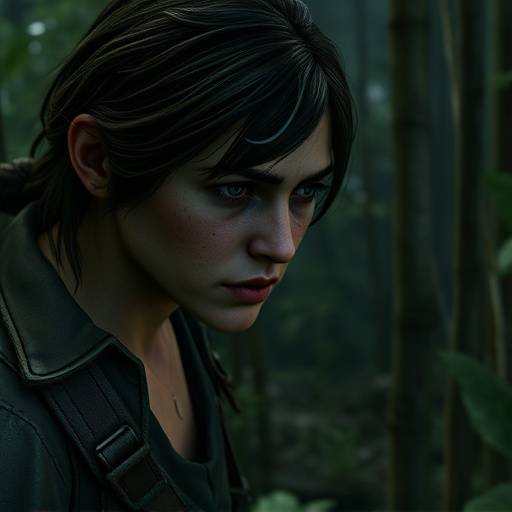From Blocks to Breath-Taking: The Visual Evolution of Games
Journey with us through the incredible transformation of video game graphics, a testament to technological leaps and artistic ingenuity.
The Dawn of Digital Artistry: Pixels and Primitive Polygons
In the earliest days of video games, visual expression was constrained by the fundamental limitations of the hardware. The late 1970s and early 1980s were defined by the vibrant, blocky world of pixel art. Games like Space Invaders (1978) and Pac-Man (1980) utilized rudimentary sprites, carefully crafted pixel by pixel, to represent characters, enemies, and environments. These graphics, though simple by today's standards, were incredibly effective. Their abstract nature often invited players' imaginations to fill in the details, fostering a unique form of engagement.
The 8-bit and 16-bit eras brought about significant advancements. Consoles like the Nintendo Entertainment System (NES) and Super Nintendo Entertainment System (SNES), as well as personal computers of the time, allowed for more colors, higher resolutions, and more complex sprite animations. Games like Super Mario Bros. (1985) showcased an astounding level of detail within these constraints, creating iconic characters and worlds that are still recognizable today. The artistic mastery required to create such visually rich experiences within severe limitations is a hallmark of this period. Developers became adept at using dithering techniques and clever color palettes to imply depth and texture.
The transition to 3D graphics in the mid-1990s, spearheaded by consoles like the Sony PlayStation and the Nintendo 64, marked a paradigm shift. Early 3D games, such as Super Mario 64 (1996) and Tomb Raider (1996), featured blocky polygons and low-resolution textures. While primitive compared to modern standards, these games were revolutionary, offering players the ability to explore three-dimensional spaces from unprecedented perspectives. The challenge for artists and designers was immense: how to create believable worlds with limited geometric complexity and often jarring texture seams? Yet, this era laid the groundwork for everything that followed, proving that three-dimensional digital environments were not only possible but immensely compelling.

The iconic blocky aliens of Space Invaders .

Vibrant 8-bit worlds from Super Mario Bros. .

Early 3D exploration in Super Mario 64 .
The Refinement of Form: From Polygons to Photorealism
As hardware capabilities continued to surge, so did the ambition of game developers. The early 2000s saw a significant leap in polygon counts, texture resolution, and the introduction of more sophisticated lighting and shader models. Games began to move beyond the blocky aesthetics of the previous generation towards a more polished, almost stylized realism. Titles like Grand Theft Auto III (2001) created expansive, detailed urban environments that felt more alive than anything seen before. The Xbox and PlayStation 2 era was characterized by a growing diversity of visual styles, from the cel-shaded charm of The Legend of Zelda: The Wind Waker (2002) to the gritty, realistic portrayal of urban decay in Silent Hill 2 (2001).
The advent of the Xbox 360 and PlayStation 3 generation truly propelled games into the realm of high-fidelity graphics. High-definition displays became standard, and developers embraced techniques like normal mapping, specular mapping, and advanced particle effects to create incredibly detailed characters and environments. This period witnessed the rise of truly stunning visual achievements, with games striving for an ever-increasing level of realism. Studios began to focus on environmental storytelling, using visual cues to convey narrative and atmosphere. The meticulous design of worlds in games like BioShock (2007) and Gears of War (2006) demonstrated the power of visual fidelity to enhance immersion and player experience.
Today, the pursuit of photorealism is at its zenith. Technologies like real-time ray tracing, advanced physically-based rendering (PBR), and high-resolution asset pipelines allow for visual fidelity that can, in many cases, rival pre-rendered cinematic sequences. Games like Cyberpunk 2077 (2020) and The Last of Us Part II (2020) present worlds with astonishing detail, lifelike character models, and incredibly realistic lighting and reflections. The subtle nuances in facial expressions, the way light interacts with different materials, and the sheer density of environmental detail all contribute to an unparalleled sense of presence and immersion. This relentless push towards realism is not just about technical prowess; it's about creating more believable, emotionally resonant experiences that draw players deeper into the game's narrative and world.

The atmospheric Art Deco of BioShock .

Unprecedented realism in The Last of Us Part II .

The vibrant dystopia of Cyberpunk 2077 .
Artistic Movements Shaping the Visual Landscape
The evolution of game visuals is not solely a story of technological advancement; it's deeply intertwined with artistic movements and design philosophies. From the abstract beauty of early pixel art to the hyper-detailed worlds of today, each era has embraced and reinterpreted artistic principles.
Minimalism , as we've explored, champions simplicity and intentionality. It strips away the superfluous, focusing on essential forms and colors to create impactful experiences. Games like Fez (2012) and Limbo (2010) demonstrate how a constrained visual palette and simple geometry can evoke complex emotions and compelling gameplay.
Conversely, Emotional Realism leverages the full spectrum of visual technology to forge deep connections with players. This approach prioritizes believable characters, atmospheric environments, and nuanced details that resonate with our own human experiences. Titles such as Red Dead Redemption 2 (2018) and Hellblade: Senua's Sacrifice (2017) utilize visual fidelity to explore profound themes and deliver emotionally charged narratives.
Beyond these two prominent poles, other artistic influences are evident. Cel-shading , inspired by traditional animation, brought a comic-book aesthetic to games like The Legend of Zelda: The Wind Waker , offering a distinct and timeless visual style. Art Deco and Retrofuturism have heavily influenced games like BioShock , lending them a unique thematic and visual identity. The exploration of stylized aesthetics, rather than pure imitation of reality, allows for a broader range of artistic expression and can contribute significantly to a game's unique identity and thematic depth.
"The choice of visual style is as crucial as the gameplay mechanics. It's the primary conduit through which the player interprets and feels the game's world and narrative. Whether it’s the stark beauty of minimalism or the layered detail of realism, art in games is about creating an unforgettable sensory and emotional dialogue."
The ongoing dialogue between technological possibility and artistic vision continues to push the boundaries of what is achievable in video game visuals. This dynamic interplay ensures that the visual landscape of gaming will remain a fertile ground for innovation and creative expression for years to come.
A Glimpse into the Future
The journey of game visuals is far from over. With advancements in AI-driven content generation, real-time rendering capabilities, and the burgeoning field of virtual and augmented reality, the future promises even more breathtaking and immersive experiences. We are on the cusp of a new era where the line between the digital and the real will continue to blur, offering players unprecedented levels of interaction and visual fidelity.
The Art of Pixels is dedicated to exploring these trends and their impact. We invite you to delve deeper into our other sections to gain a comprehensive understanding of game visual culture:
| Section | Focus | Key Concepts |
|---|---|---|
| Home | Introduction to game visual culture and its significance. | Artistry, innovation, player experience, aesthetic trends. |
| Minimalism | Deep dive into minimalist design principles and examples. | Simplicity, clarity, intentionality, color theory, abstract forms. |
| Emotional Realism | Examining how games achieve believable and impactful emotional experiences. | Character fidelity, environmental storytelling, player empathy, narrative integration. |
| Accessibility | How visual design impacts player inclusivity and enjoyment. | Color blindness, visual clutter, customizable UI, cognitive load. |
Join us as we continue to chart the course of visual innovation in the world of video games, celebrating the art, the technology, and the passion that bring these digital worlds to life.